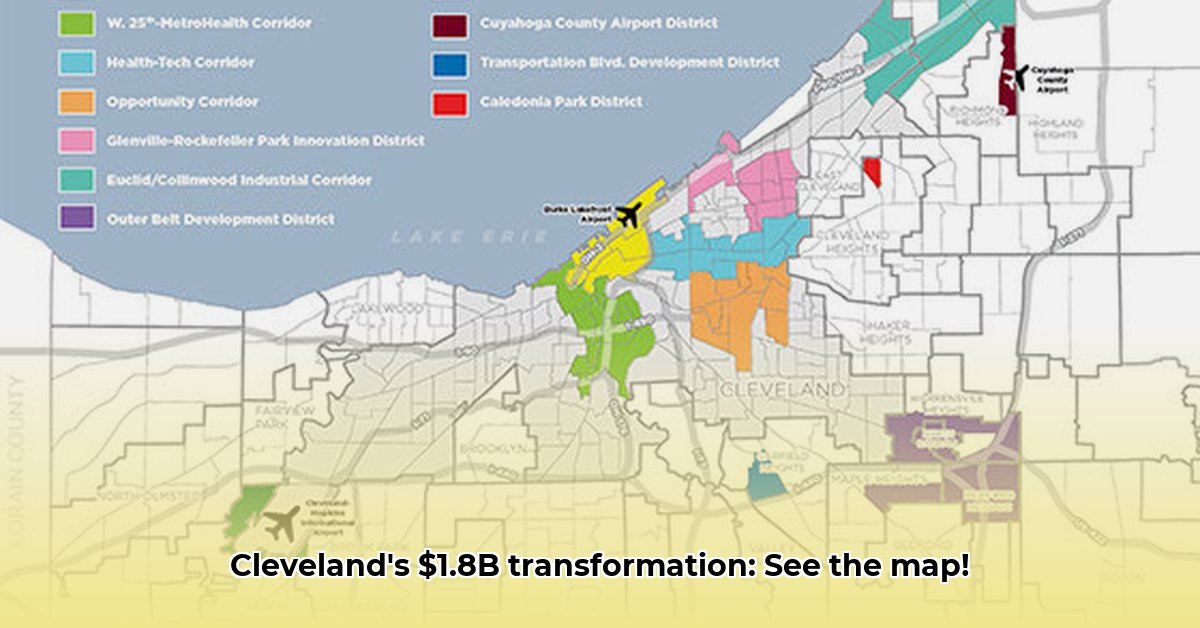
Cleveland's $1.8 Billion Revitalization: A Collaborative Approach
Cleveland is experiencing a dramatic economic resurgence, fueled by a projected $1.8 billion investment transforming its urban landscape. This isn't merely about constructing new buildings; it's a comprehensive strategy aimed at revitalizing neighborhoods and fostering sustainable economic growth. This investment underscores a collaborative approach involving the city government, private developers, community organizations, and residents, working together to reshape Cleveland's future. But how effective is this ambitious plan, and are its benefits equitably distributed? For a visual representation of project locations, see this Cleveland map.
Understanding the Cleveland Development Model (CDM)
The Cleveland Development Model (CDM) visually represents this substantial investment, mapping projects totaling $1.8 billion across key areas including the Central Business District, Midtown, University Circle, and several strategically selected neighborhoods. However, the CDM presents a limited perspective, focusing on approximately four square miles and relying largely on self-reported data from developers. This raises questions about the completeness and accuracy of the $1.8 billion figure and the overall scope of Cleveland's economic development efforts. Does the CDM truly capture the entirety of the city's dynamic economic landscape?
Data Limitations and Transparency Concerns
The reliance on self-reported data introduces potential biases and inaccuracies in the CDM. How can we ensure the data's reliability and transparency to foster public trust and informed decision-making? More robust data collection methods, involving independent verification and publicly accessible datasets, are crucial to accurately reflect the impact of this investment.
Stakeholder Perspectives: A Multifaceted Approach
The success of the CDM hinges on the collaboration of diverse stakeholders, each with unique perspectives and priorities:
- City Government: Focuses on effective project implementation, transparent financial processes, and equitable distribution of benefits. Short-term goals include refining data collection methods and increasing transparency; long-term objectives encompass comprehensive TIF impact assessments and a city-wide economic strategy review.
- Real Estate Developers: Prioritize financially viable projects aligning with the city's broader vision. Their short-term focus includes navigating city regulations and securing funding; long-term goals encompass sustainable and inclusive development practices and innovative financing models.
- Community Organizations: Advocate for equitable resource allocation and community benefits. Short-term goals include negotiating Community Benefit Agreements (CBAs) and addressing displacement concerns; long-term objectives involve fostering community-led initiatives and tackling issues of gentrification.
- Residents: Their input is critical in shaping the long-term success of these projects. Short-term goals include actively participating in community discussions and providing feedback; long-term objectives encompass improved infrastructure, enhanced amenities, and neighborhood services.
Challenges and Opportunities: Balancing Growth and Equity
While the $1.8 billion investment presents significant opportunities for revitalization, challenges remain. Concerns regarding equitable distribution of benefits and the potential for displacement and gentrification are paramount. How can Cleveland ensure this revitalization lifts all neighborhoods, not just select areas? This requires proactive measures to mitigate negative consequences and build inclusive, sustainable communities. How can we ensure that residents feel a direct benefit and are not displaced from their homes and communities?
Mitigating Displacement Risks: A Multi-Pronged Strategy
Addressing displacement requires a multi-pronged approach:
- Community Benefit Agreements (CBAs): Legally binding agreements between developers and community organizations to ensure equitable distribution of benefits, including affordable housing and local job creation.
- Targeted Affordable Housing Initiatives: Inclusion of affordable housing units in new developments and targeted construction of affordable housing projects within revitalized areas.
- Robust Community Engagement: Meaningful and ongoing community participation through public forums, surveys, and feedback mechanisms are essential to build trust and address resident concerns.
- Data-Driven Decision Making: Regular analysis of housing costs, displacement trends, and distribution of benefits to inform strategy adjustments and ensure accountability.
The Role of Tax Increment Financing (TIF)
Tax Increment Financing (TIF) plays a pivotal role in Cleveland's revitalization strategy. By redirecting increased property tax revenue generated within designated areas, TIFs fund infrastructure improvements and development costs. While a potent tool, TIFs must be carefully managed to avoid exacerbating inequalities. How can we ensure TIFs promote equitable development and mitigate the risk of displacement? Transparency and robust community engagement are crucial for responsible TIF implementation.
Conclusion: A Sustainable Future for Cleveland
The Cleveland Development Model offers a valuable, albeit incomplete, snapshot of the city's economic transformation. Its limitations underscore the importance of continuous evaluation, improved data collection, and unwavering commitment to community engagement and equitable development practices. The long-term success of this $1.8 billion investment hinges on Cleveland's ability to navigate the challenges and seize the opportunities to create a vibrant, inclusive, and sustainable future for all its residents. The future of Cleveland depends on ensuring this investment benefits the entire community and addresses the risks of displacement and inequitable distribution of resources.